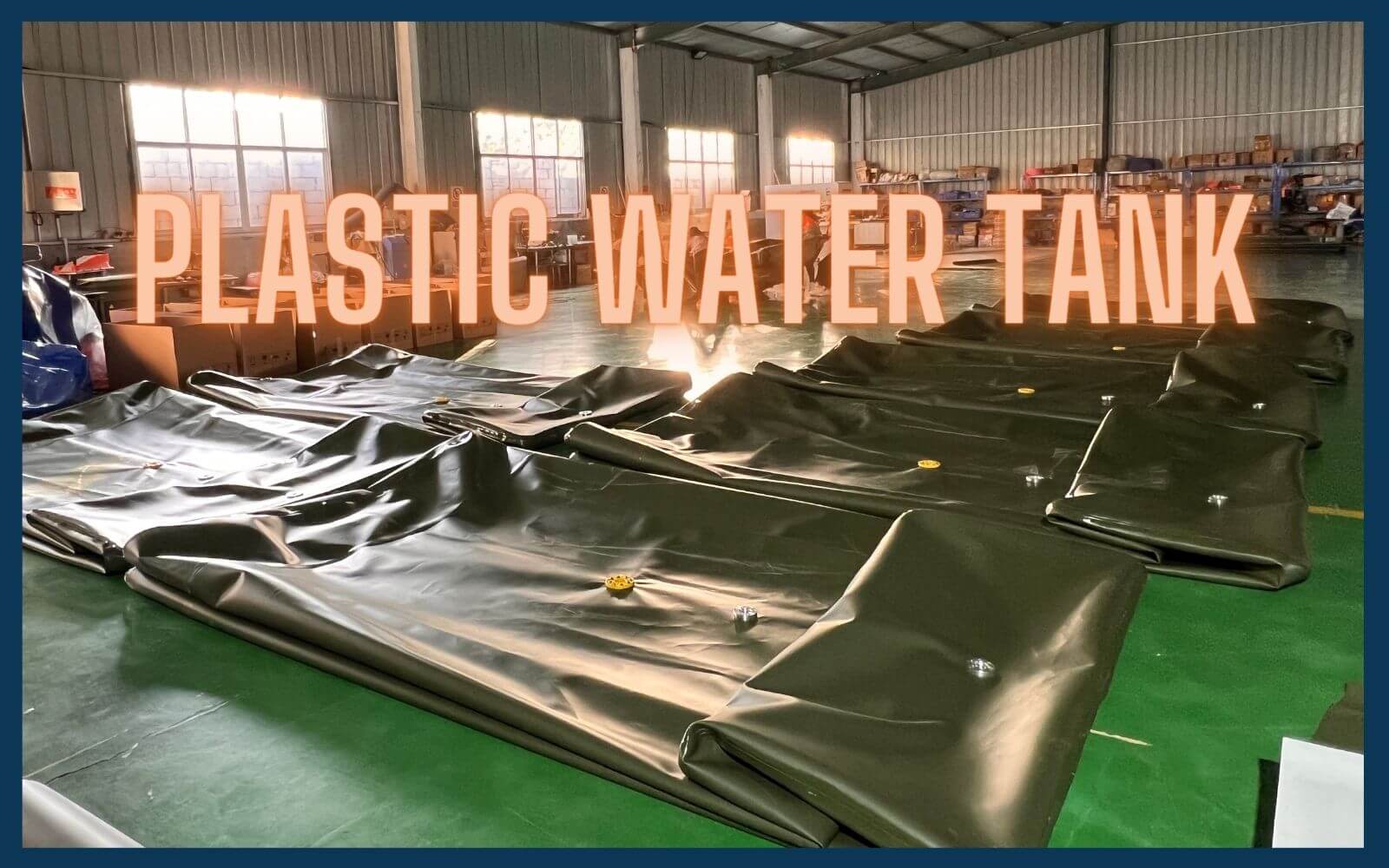PLASTIC WATER TANK
Plastic water tank is a popular choice for water storage due to its cost-effective and durability. However, like any other product, they can encounter damage over time. In this article, we look into the possibility of repairing plastic water tank and the steps involved.
When we talk about the plastic water tank, it’s not just one type of tank, it is consisted by vairous tanks, including the rigid tanks and soft tanks.
Rigid tanks contain PE/PP/ FPR/ Rigid PVC tanks. When damage occurs and the leakage happened, there is no need to hesitate to replace them, because the rigid tanks can’t be repaired at working site. If repair needed, we have to send them back to factory. And sometimes, the repair can’t work.
In here, we will only explore the flexible water tanks, as only soft plastic tanks can be repaired at customer side.
Cracks and Leaks
The cracks may be caused by the sharp stuffs, sometimes like the knife/sharp stone stabs. Usually the reason to make this trouble is not cleaning the contructure site before installation. So reading installation instruction carefully before proceding the process is necessary.
UV Damage
UV can make the plastic discoloration, then shorten the longevity. There have 2 ways to remove the UV damage.
- Physical solution: adding a cover on the plastic water tanks to avoid the sunshine(UV) to contract with tanks direct. Or can place the plastic tanks indoor. This way means the tanks no contact with UV direct.
- Technical solution: improve the technology to make the plastic not to be afraif of UV. Now a day, factory adds UV-resistant mateiral during the production of raw materials. So the UV-resistant is a new property of the plastic tanks.
Wear and Tear
After long term usage and ircorrect movement, the wear and tear occurs.To prevent it, there have some tips:
- Installation and movement following the supplier’s instruction.
- Clean the construction site to avoid sharp stuff. Or placing the ground sheet to protect the plastic tanks.
- Period maintenance.
Impact Damage
High speed collision will provide tremendous strength. The advice is not to impact the tank direct. If the collision happened, inspect the tank carefully, once damage occurs, repaired it immediately.
Factors to consider when determining whether a plastic water tank can be effectively repaired:
Size and Severity of Damage
The first step is to classify what tank you’re using. The rigid tank, like PE/PP/FPR/PVC tanks, can’t repair at site. Mostly even you send those tanks to factory, they can’t repair too.
The flexible tanks, PE membrane/PP membrane tanks, can’t repair, they’re one-time used tanks. But part PVC/TPU tanks can repair at site by using repair kit.
After those above, we got noticed, only part of flexible tanks can repair by users, and next, we need to make sure how serious the damage is:
- The damage size, I recommend to repair the tank by yourself when the damage area size is less than an A4 size(8.3 x 11.7 inches).
- How hard the damage is, it can determine if the tank can be repaired by yourself: the position of the damage(corner, edge, center, etc); the size of the damage; the material condition(discoloration etc).
Type of Plastic
As we talked above, only part of flexible material can repair by user, the materials are flexible PVC material and flexible TPU material.
After all, if we want to repair the damaged tanks by ourselves, before taking action, consider factors above. If you can’t repair it, contact the supplier and send them back to factory, it is also a good choice.
Mostly the repair kit contains: A4 size material sheet(PVC/TPU); special-purpose glue; stoppers; clips. The stopper and the clips are used for termporary & emergency situation. For repair: glue and materials are necessary.
Cleaning and Preparing the Surface of Plastic Water Tank
Clean the damage part inside and outside, remove the damaged parts. After clean, letting the tank dry(inside and outside), sometimes it needs 24-48 hours.
Applying Patching Material
After clean and dry, placing the material sheet on the damaged part, to ensure the material can cover the damaged hole.
Apply special-purpose glue along the hole edges, letting glue dry, usually 30-60mins.
Cover the mateiral sheet on the glued part.
Reinforcing the Patch
Reinforcement is mandatary, putting heavy stuff, at least 10kgs, to cover the patch. Letting the pressure on the patch at least 24 hours.
After steps above, the repairation is done.
So far we can do the repair by ourselves, but sometimes we may have to looking for the assistant from the experts. So when:
- The damage area is too big, when damage size is over A4 size, then asking the factory to help.
- The position is not easy to repair, like the corners.
- The liquid which stores in the tank is uncommon. If the liquid is dangerous, then asking the experts to help.
My advice is, if the repair is needed, asking the factory to guide.








